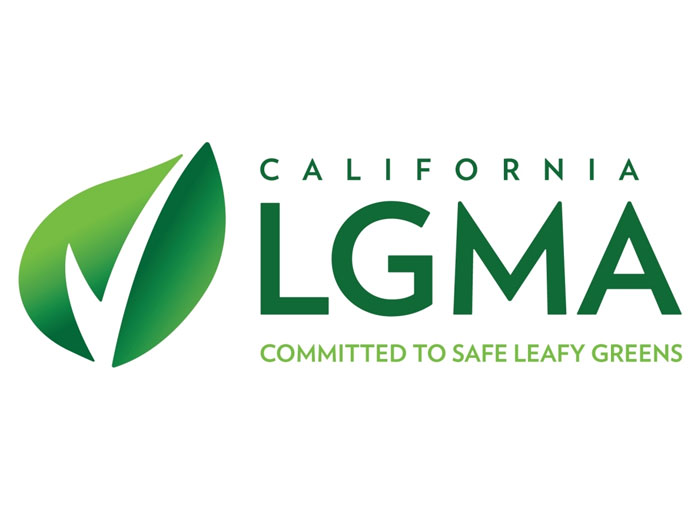
Sacramento, CA — The California Leafy Greens Marketing Agreement Board voted last week to accept several updates to required food safety practices for the farming of leafy greens.
“Over 50 recommended changes were unanimously approved by the Board to strengthen food safety requirements for the production of leafy greens in the areas of Farm Water Use and Field/Equipment Sanitation,” explained Scott Horsfall, CEO of the California Leafy Greens Marketing Agreement (LGMA). “These are in addition to several significant changes made by the LGMA less than a year ago.”
Horsfall explained the most recent updates are the first of many more as the LGMA conducts a complete review of all its mandatory food safety practices, or metrics, in the wake of recent outbreaks linked to romaine lettuce.
“A series of Subcommittees has been reviewing the LGMA’s required food safety practices in all areas,” explained Horsfall. “The Subcommittees for Water Use and Field/Equipment Sanitation met numerous times in recent months to consider new research, examine findings from outbreak investigations, gather input from food safety experts and the public before making recommendations to the full LGMA Board last week. This process is being facilitated by Western Growers as part of an open, transparent process.”
“The LGMA is committed to strengthening required food safety practices throughout our processes,” said Dan Sutton, Chairman of the LGMA and a leafy greens farmer from San Luis Obispo, CA. “We are doing everything possible on our farms to prevent future foodborne illness outbreaks.”
Although many of the 50+ changes strengthen existing language or provide additional guidance and direction for leafy greens food safety, several substantive changes were approved by the LGMA Board last week. Some of the more important changes include:
- Adoption of new requirements that ensure the safety of water used during overhead application of pesticides and crop protection materials. This update is similar to changes approved by the LGMA last year requiring that any water from open sources – such as a canal or reservoir — applied via overhead application must be treated to eliminate pathogens during the previous 21 days before harvest.
- Approved enhancements to monitoring requirements for water used in farming leafy greens to ensure that regular water quality tests are conducted and that samples are collected throughout the irrigation systems used in leafy greens fields.
- Added language to minimize the risk of water applied via furrow irrigation from coming into contact with any edible portion of the leafy greens plant.
- Updated best practices for cleaning harvest equipment, containers, tools and bathroom facilities in and near leafy greens fields.
- New language designed to prevent the cut end of leafy greens product from coming into contact with the ground during harvest.
Similar changes were also adopted by the Arizona LGMA.
“California and Arizona produce approximately 90% of the leafy greens grown in the U.S.,” said Horsfall. “The LGMA programs ensure a unified set of food safety practices based on the last science are being followed on leafy greens farms in these two states.”
Horsfall explained that approved updates will now be forwarded to the California Department of Food and Agriculture to be incorporated into food safety checklists used by government auditors to verify new practices are being followed on leafy greens farms.
The LGMA program will immediately begin educating members on how to comply with the new standards.
“Additional updates are forthcoming in the areas of Soil Amendments/Inputs and Adjacent Land as the Subcommittees assigned to these topic areas are currently meeting to review existing practices. These Subcommittees will be making their recommendations to the LGMA Board in the near future,” said Horsfall. “We are very grateful to the industry members and scientists who are working diligently as part of the LGMA Subcommittee process to help improve the safety of leafy greens.”



